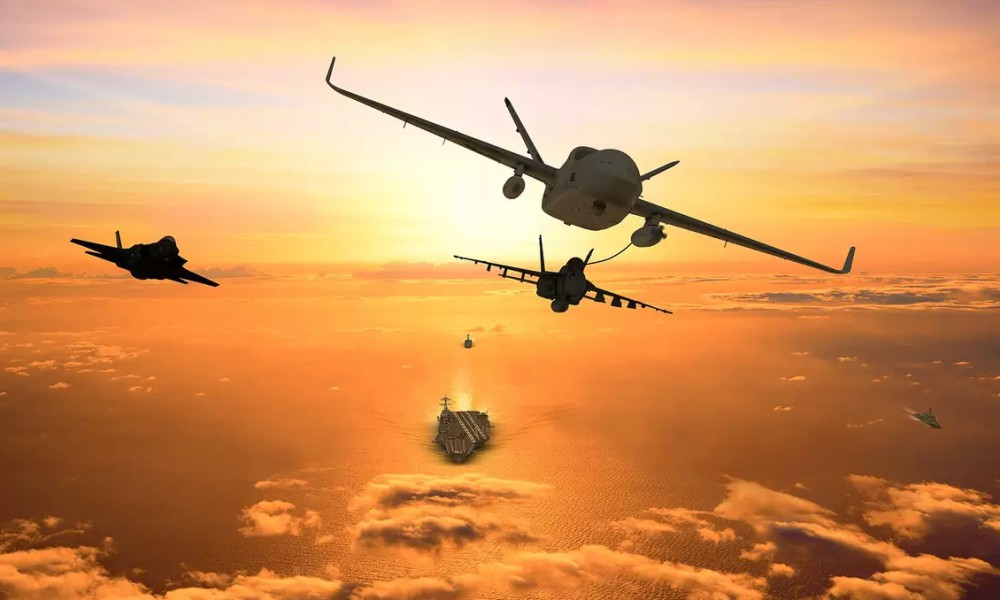General Atomics Aeronautical Systems, Inc. (GA‑ASI) has announced its MQ-25 Stingray offering to the U.S. Navy in collaboration with a range of highly regarded industry partners that represent the best in American aerospace.
GA-ASI has designed a purpose-built MQ-25A Stingray, optimized for the tanking mission and providing exceptional fuel give, that will more than double the range of the Carrier Air Wing. Our offering exceeds all of the Navy’s requirements, including carrier suitability.
“As the world’s premier quick reaction unmanned aircraft system manufacturer, we are committed to delivering the most effective, affordable, sustainable, and adaptable carrier-based aerial refueling system at the lowest technical and schedule risk,” said David R. Alexander, president, GA-ASI. “This collaboration of the best in aerospace industry will provide the U.S. Navy with a fleet ready unmanned tanker with exceptional growth, well within the Navy’s preferred timeline.”
“Boeing Autonomous Systems is pleased to have the opportunity to collaborate with General Atomics on its MQ-25 proposal,” said Vice President and General Manager Chris Raymond. “We look forward to supporting GA with our aviation and autonomous experience.”
Pratt & Whitney’s high-bypass PW815 commercial engine, featuring the latest technology, will enhance GA-ASI’s offering. “Ensuring readiness for militaries around the world is core to our mission, and Pratt & Whitney is proud to offer the PW815 engine as part of General Atomics’ MQ-25 program,” said Military Engines President Matthew Bromberg. “The engine represents the state-of-the-art eco-design technology, developed and refined with more than 20 years of investment and effort.” The PW815 was intentionally designed with availability in mind. It is designed to be the easiest engine in its thrust class to access and maintain. Pratt & Whitney has extensive, recent experience meeting Navy propulsion requirements on the EA-6B (J52 engine) and the F-35 (F135 engine), as well as unmanned aircraft experience from the X-47B program (F100 engine).
UTC Aerospace Systems, one of the world’s largest suppliers of technologically advanced aerospace and defense products, will design and build the landing gear. “UTC Aerospace Systems is proud to design and produce the landing system for the GA-ASI MQ-25 Stingray,” said Landing Systems President Jim Wharton. “Our extensive experience in landing systems design and integration, combined with decades of carrier-based application, allow us to custom design an optimized solution for MQ-25.”
L3 Technologies, the world’s leader in Wideband SATCOM and Line-of Sight communication systems will design and build the communications systems for the GA-ASI Stingray. L3’s latest technology advancements in the MQ-25 communications system reflects more than 20 years of collaboration experience between the two companies across the family of GA-ASI aircraft all over the world. “L3 Technologies is proud to be part of the GA team to bring this critical air refueling and “light” intelligence, surveillance and reconnaissance capability to Naval Aviation. L3’s contribution to a secure communications network is combined with other discriminating capabilities on the GA MQ-25 including system commonality, allowing the Navy to sustain fleet combat aviation and enable freedom of navigation,” said Dan Gelston, president of L3’s Broadband Communications sector, and its Communication Systems-West division.
BAE Systems will provide a variety of software capabilities, including mission planning and cybersecurity. “Delivering this mission critical MQ-25 system on schedule is vital to program success,” said Kevin Malone, vice president and general manager of Analytics Systems at BAE Systems. “Our experience in delivering mission management software and shipboard ISR systems to the U.S. Navy is why BAE Systems is the supplier of choice for this role.”
Rockwell Collins will provide advanced navigation technologies, a new generation of the TruNet™ ARC-210 networked communications airborne radio and a comprehensive simulation framework to support General Atomics’ low-risk schedule. “We are excited to be a part of the General Atomics team as they build upon our decades of experience in communication, navigation and simulation technologies to bring this transformational platform to the Navy,” stated David Schreck, vice president and general manager, Airborne Solutions for Rockwell Collins.
GKN Aerospace’s Fokker business continues to provide GA-ASI with landing gear technologies for MQ-9 and delivers proven carrier tail hook technologies for the MQ-25 arresting hook. “We are proud to expand our longstanding relationship with General Atomics to the MQ-25 arresting hook,” says Michiel van der Maat, vice president Business Development GKN Aerostructures & Systems Europe and Asia. “The MQ-25 is the perfect platform to benefit from GKN Fokker’s cutting edge Landing Gear technologies.”
General Atomics Electromagnetic Systems, which began testing its EMALS and AAG systems on the USS Ford at sea last year, provides up front carrier integration experience and risk reduction.
General Atomics Systems Integration has U.S. Navy program experience and provides landing gear integration expertise.
Source: Press Release

